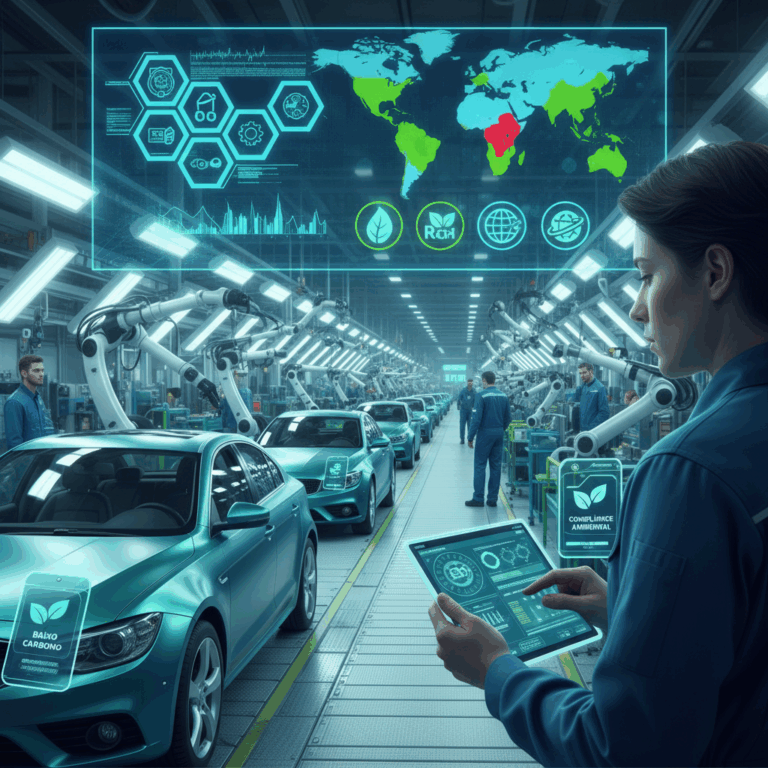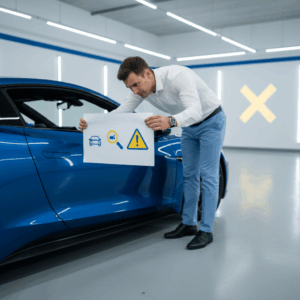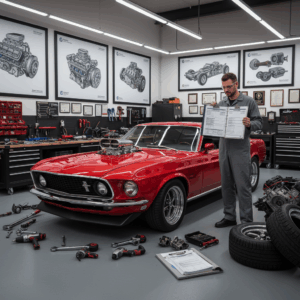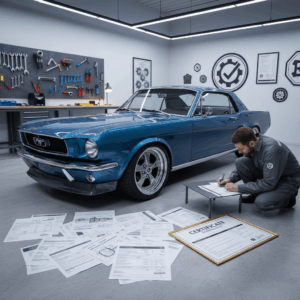Global Emissions Regulations Impact
The global emissions regulations significantly influence automakers worldwide, shaping vehicle design and manufacturing processes. These rules aim to reduce harmful emissions and combat climate change.
Especially in the European Union, strict CO2 reduction goals require manufacturers to innovate rapidly. This has led to new strategies to meet environmental targets while managing financial risks.
Automakers face both challenges and opportunities as they adapt to evolving policies. Understanding the EU’s approach offers insight into the broader impact of these regulations on the automotive industry.
EU CO2 Reduction Targets
The EU has set annual CO2 reduction targets for new vehicles, aiming for a 15% drop each year from 2025 to 2029 compared to 2021 levels. This ambitious plan pushes manufacturers toward cleaner technologies.
These targets encourage the development of more efficient engines and the increased production of electric vehicles. Meeting these goals is critical for automakers to avoid heavy fines and maintain market presence in Europe.
This framework creates a clear timeline that drives innovation, as automakers must consistently lower emissions while keeping costs in check, balancing regulatory compliance with economic feasibility.
Regulatory Flexibility Measures
Recognizing industry challenges, the EU Parliament introduced flexibility measures allowing automakers to average their CO2 performance over three years instead of annually through 2027. This eases immediate compliance pressure.
This approach provides manufacturers more time to refine technologies and manage financial risk linked to emission penalties. It supports a smoother transition without compromising long-term environmental goals.
By adjusting regulations to industry realities, the EU fosters innovation while preventing market disruption, ensuring that emission reduction remains achievable under feasible conditions.
Automaker Compliance Strategies
Automakers adopt varied compliance strategies to meet emissions regulations and avoid costly penalties. These approaches blend financial planning, technological investment, and collaboration.
Facing stringent rules, brands strive to balance innovation with practical solutions, ensuring vehicles meet required emission standards and market demands for sustainability.
Choosing the right strategy can prevent significant fines and position automakers as leaders in the evolving automotive market focused on low emissions.
Cost of Non-Compliance and Fines
Non-compliance with emissions limits results in heavy financial penalties, reaching up to €95 per gram of CO2 excess per vehicle sold. These fines can accumulate to billions in major markets.
The risk of fines compels manufacturers to prioritize emissions reduction investments. This proactive approach safeguards company finances and reputation in a progressively regulated environment.
Understanding these costs drives automakers to innovate or partner strategically, minimizing exposure to economic risks tied to emissions infractions.
Partnerships in Electric Vehicle Production
Many automakers form partnerships with EV manufacturers to leverage expertise and scale production of compliant vehicles rapidly. Collaboration accelerates access to advanced low-emission technologies.
Such alliances reduce development costs and share risks, enabling faster market entry of electric models that meet stringent emissions standards across regions.
These cooperative strategies provide flexibility and enhance competitiveness as the demand for cleaner vehicles grows globally.
In-House Development of Low-Emission Models
Some brands, including Volkswagen and BMW, invest significantly in their own low-emission vehicle development. This vertical integration fosters innovation tailored to brand identity and consumer needs.
In-house efforts focus on creating efficient internal combustion engines, hybrid models, and full electric vehicles that comply with upcoming regulatory demands.
This approach offers greater control over technology and production but requires substantial investment in R&D and manufacturing capabilities.
Industry Adaptation to Regulations
The automotive industry faces significant technological and economic challenges adapting to strict emission regulations worldwide. Innovations in powertrain technologies are essential for compliance.
These challenges compel manufacturers to redesign vehicles, invest heavily in research, and adjust supply chains, impacting costs and operational models across the sector.
Technological and Economic Challenges
Developing low-emission technologies such as electric powertrains and hybrid systems requires major R&D investments, pushing automakers to overcome technical hurdles.
Economic constraints limit how fast manufacturers can transition, as high costs affect pricing strategies, profitability, and market competitiveness in a tight regulatory environment.
Moreover, establishing new manufacturing processes and retraining personnel adds layers of complexity and cost, further challenging the industry’s agility in meeting emission targets.
Future of Sustainable Automotive Industry
The future of the automotive industry is increasingly defined by sustainability goals that push manufacturers toward cleaner, greener technologies. Global initiatives demand significant reductions in vehicle emissions to combat climate change.
As governments tighten regulations, automakers must innovate aggressively. This transition involves adopting electric vehicles, improving fuel efficiency, and developing new sustainable materials, reshaping the entire industry landscape.
Meeting these sustainable goals requires cooperation between policymakers and industry stakeholders to ensure scalable, cost-effective solutions that benefit both the environment and the economy.
Ambitious Global Emission Reduction Goals
Worldwide, governments have set ambitious emission reduction targets with clear timelines to cut greenhouse gases from vehicle fleets. These goals drive rapid technological advancements in clean transportation.
Automakers must lower CO2 emissions significantly, often requiring breakthroughs in battery efficiency, alternative fuels, and vehicle design. These efforts align with international climate commitments like the Paris Agreement.
Such targets inspire ongoing innovation but create pressure to balance ecological benefits with affordability and consumer acceptance, ensuring broad adoption of low-emission vehicles.
Maintaining Competitiveness Amid Regulatory Pressure
Despite stricter regulations, automotive companies strive to remain competitive by investing in research and partnerships that accelerate sustainability without sacrificing profit margins or market share.
Strategies include integrating cutting-edge technologies, optimizing production processes, and expanding electric vehicle lineups to appeal to environmentally conscious consumers worldwide.
Success depends on agility in adapting to policy changes while delivering attractive, cost-efficient vehicles that comply with evolving standards and fulfill market expectations.







